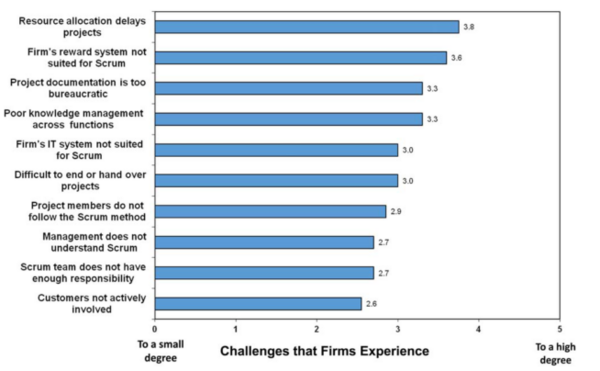The Stage-Gate Model/phase-gate process
Contents |
Abstract
Developed by Bashir Isse
History
Model
Application
Adoption and Applicability
Gains from implementing stage gate
bla bla
Limitations

The typical Stage-Gate model had some limitations that the new versions of the model have tried to overcome. It has been accused of being too linear and rigid to handle innovative and dynamic projects and not adaptive and flexible enough to meet the new reality of projects and the changing Voice of Customer (VoC). Moreover, a lot of criticism has been about the decision-making points and the criteria used for decision making. It was found that in many cases financial criteria were overweight and that decisions were based on faulty financial analysis due to limited data availability.[2]
For the latest version of the hybrid agile stage-gate model, several challenges seem to lie ahead, although there is still little research on the new model and few adoptions from the industry side, up to today. Some of the challenges that should be investigated further are the following:[3]
- Defining a done sprint: defining a done sprint in the software industry is easier than in the physical manufacturing world, as not every product can be equally divided in smaller parts. Rather the sprints may focus on different versions of the product, but still this is hard to be exactly defined (it can be a drawing, a completed checklist, a physical prototype)
- Resource allocation: The agile methodology uses dedicated team members that work full time for the project. This seems to be in contrast with the cross-functional setup of the typical stage-gate model.
- Planning of the project: the stage-gate model is a long-term plan model, while the agile methodology is based on very short-term planning. In fact the stage-gate model serves as a visible roadmap for the project team.[4] It may be hard to ensure the deliverables at the gate and the focus/purpose of the project.
- When should agile be used?: the question here is whether agile is suitable for all projects, or if it works better with the riskier projects.
Furthermore, the challenges linked to the involvement of senior management and the validity and credibility of the decision-making process still remain. As the gatekeeper role is key for the stage-gate model, appointing the appropriate gatekeepers, who really attend meetings, contribute to the decision-making process and improve the gate effectiveness is very important for the success of the model.[5]
Finally, the trends in innovation management should be considered more carefully. Open innovation seems to be an interesting way of innovating that companies will probably explore more in the years to come. The stage-gate model should be examined in an open innovation framework and potential improvements should be considered.[6]
Annotated Bibliography
R. G. Cooper, “Stage-gate systems: A new tool for managing new products,” Bus. Horiz., vol. 33, no. 3, pp. 44–54, 1990.
In this paper, Cooper explains the best practices of the best innovators in the 1980s. By studying the top performing companies the stage-gate model emerged. The model is explained deeply, and a typical model is given, characteristic of the manufacturing industry.
R. G. Cooper, “Invited Article: What’s Next?: After Stage-Gate,” Res. Manag., vol. 57, no. 1, pp. 20–31, 2014.
Cooper describes the Triple-A system in detail. He explains why each attribute is necessary and again how the industry has modified the model to meet the needs of new product development.
R. G. Cooper and A. F. Sommer, “The Agile–Stage-Gate Hybrid Model: A Promising New Approach and a New Research Opportunity,” J. Prod. Innov. Manag., vol. 33, no. 5, pp. 513–526, 2016.
The Agile stage-gate model is described in this paper. Furthermore, an introduction to the agile methodology is given, an example of the application of the new model in the industry and finally some suggestions for further improvement.
M. Cross and S. Sivaloganathan, “A methodology for developing company-specific design process models,” Proc. Inst. Mech. Eng. Part B J. Eng. Manuf., vol. 219, no. 3, pp. 265–282, 2005.
A very interesting paper for practitioners, about adapting the general stage-gate model to a specific company/need. The design tools proposed are really remarkable and greatly supplement the stage-gate model.
Interview of Robert G. Cooper from Planisware
In this interview, Cooper answers a lot of interesting questions and gives a very good overview of the model and its newest variations.
References
- ↑ R. G. Cooper, “Invited Article: What’s Next?: After Stage-Gate,” Res. Manag., vol. 57, no. 1, pp. 20–31, 2014.
- ↑ R. G. Cooper, “Invited Article: What’s Next?: After Stage-Gate,” Res. Manag., vol. 57, no. 1, pp. 20–31, 2014.
- ↑ R. G. Cooper and A. F. Sommer, “The Agile–Stage-Gate Hybrid Model: A Promising New Approach and a New Research Opportunity,” J. Prod. Innov. Manag., vol. 33, no. 5, pp. 513–526, 2016.
- ↑ R. G. Cooper, “Stage-gate systems: A new tool for managing new products,” Bus. Horiz., 1990.
- ↑ R. G. Cooper and S. J. Edgett, “Best Practices in the Idea-to-Launch Process and Its Governance,” Res. Manag., vol. 55, no. 2, pp. 43–54, 2012.
- ↑ J. Grönlund, D. R. Sjödin, and J. Frishammar, “Open Innovation and the Stage-Gate Process: A Revised Model for New Product Development,” Calif. Manage. Rev., vol. 52, no. 3, pp. 106–131, 2010.
- ↑ Template:Cite book